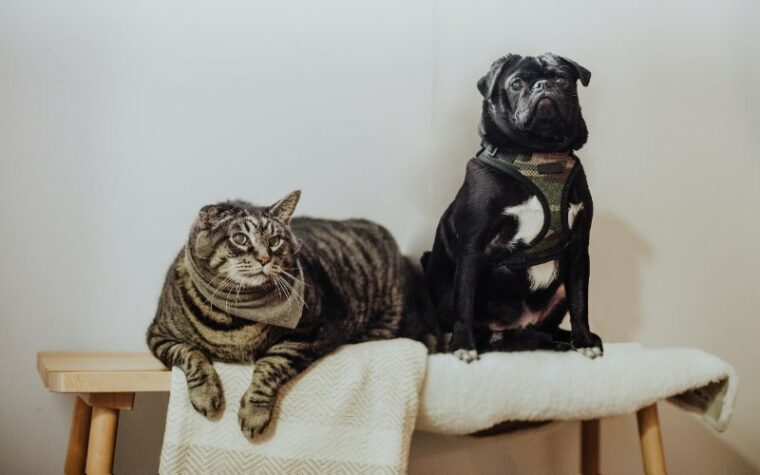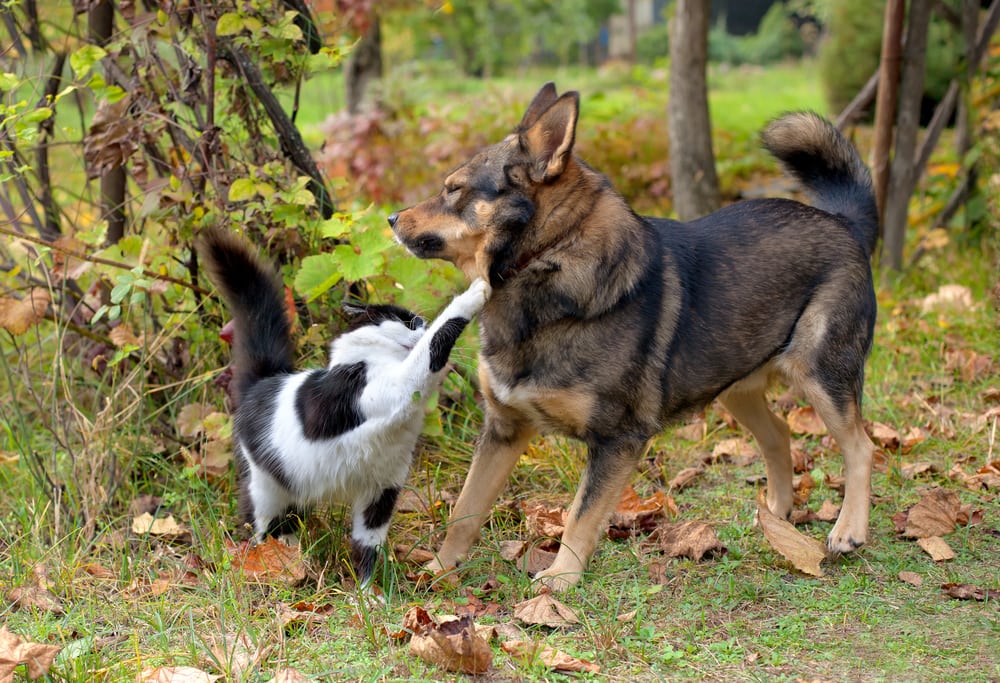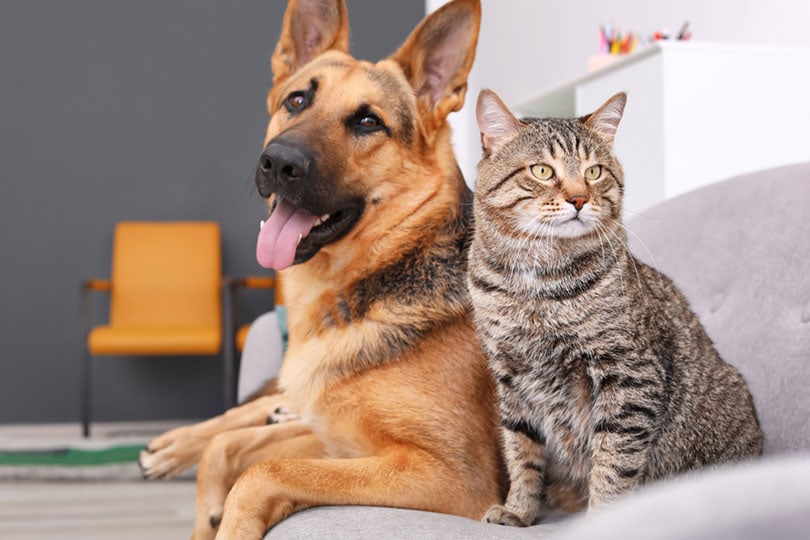
We see it in literature, on TV, and in cartoons. Everything we seem to read about cats and dogs speaks to their unfriendly and even hostile relationship. But is it true? In reality, much of it depends on how the two animals met. That, in turn, hinges on other circumstances, such as whether it was on neutral grounds. However, there are some reasons why the two might not see eye to eye.
Prey-Predator Relationship
Both dogs and cats are predators. A fleeing animal is sure to trigger these instincts, whether or not it’s appropriate. While felines are closer to their wild side, canines have a keen prey drive. A cat relies on speed and stealth to survive. A curious puppy will likely panic a cat. The latter’s first instinct is to get out of harm’s way. Thus, it sets up the scenario for an antagonistic relationship.

Competitors
We mentioned how dogs and cats hunt for a living. That makes them competitors. It was the same with humans and canines. Our first encounters with dogs probably weren’t friendly but quite the opposite. It’s easy to understand why dogs and cats wouldn’t hit it off right away. It’s worth mentioning that both animals are territorial and will defend their hunting grounds.
Different Social Structures
Cats and dogs operate on two different social structures. The former is more often a loner than not. On the other hand, canines often form cohesive groups with a hierarchy. Cats are looking to find a friend in a dog. Instead, the opposite is more likely the case. The animals also communicate differently. A dog wagging its tail wants to play. A cat is more often slapping their tail as a warning.
It goes downhill from there.
Socialization Issues
The problem between cats and dogs might have nothing to do with the actual relationship but something that happened way before they met. Puppies go through a fear period at around 8 weeks old. Negative experiences at this time could spell a lifetime of unwanted behavior. If an older cat harassed that pup, it might not welcome a later encounter with a feline.
Likewise, a puppy separated from its mother and littermates before 8 weeks old is more likely to have behavioral issues. However, cats aren’t off the hook. Many breeds have inherent personality differences.
For example, research has shown that Russian Blues are the most fearful. The study also found that the Turkish Van is the least sociable among the breeds.
The relationship with dogs could have been doomed from the start.

Varying Schedules
Let’s face it, many of us aren’t necessarily very social when we first wake up in the morning. And you probably don’t like being woken up unexpectedly. Those same things might factor into a less-than-harmonious relationship between cats and dogs. The former is nocturnal and can sleep up to 16 or more hours daily.
On the other hand, dogs snooze for 10–12 hours. They’re more likely to be active during the day when their owner is around and taking them for regular walks. The varying schedules are the perfect storm for creating tension between cats and dogs.
Genetic Factors
We mentioned the different personalities of cats. It also occurs in dogs. Some breeds, such as the Chihuahua, are more likely to show aggression than others. It could be a trait that years of evolution have baked into the personality of some canines, particularly small ones. How much activity and exposure to new things will affect how welcoming a pup is to new experiences like meeting a cat.
Remember that humans and dogs have a much longer relationship than we have with cats. Canines were selectively bred for specific tasks, such as guarding. These breeds may be more likely to chase a cat regardless of any aggression. Likewise, some dogs, such as the Chow Chow, are not very social and may not want a kitten’s attention.
Tips for Helping Your Pets Get Along
We recommend introducing your cat and dog slowly, especially if it’s the first time either animal has met the other. A pet gate between the two is an excellent way to start things off while keeping them separated in case things go sour. Safety is the most important thing. If either one seems stressed or fearful, stop the meeting and let them settle down before trying it again.
If things take a turn for the worse, distract your cat and dog with a loud or unexpected sound. That will turn their attention elsewhere while keeping you safe from bites and scratches. However, don’t be disappointed if they don’t become bosom buddies. The best you can hope for is a peaceful alliance where each one stays away from the other.

Conclusion
Cats and dogs have a lot of reasons not to get along. Genetics and their varying lifestyles can make things difficult. However, it’s not impossible. It’s best to introduce the two when they’re young and impressionable. A positive experience as kittens and puppies can lay the groundwork for a loving relationship between the two. Going slow is the key to making it happen.
Related Reads:
Featured Image Credit: Priscilla Du Preez, Unsplash






